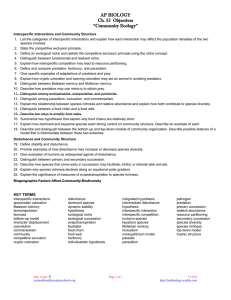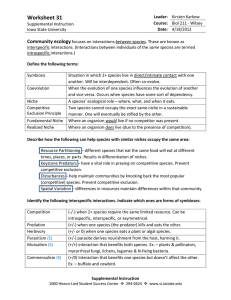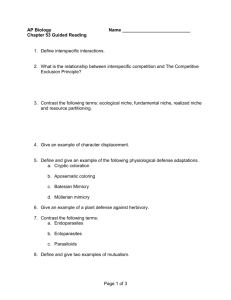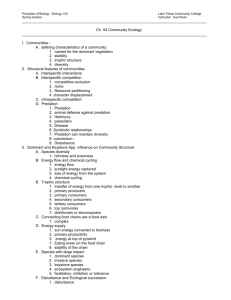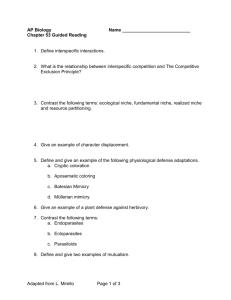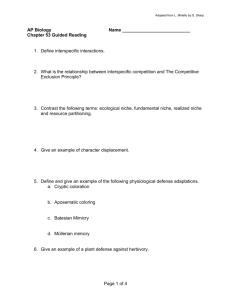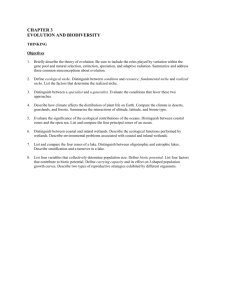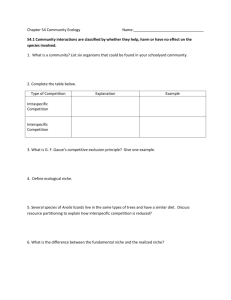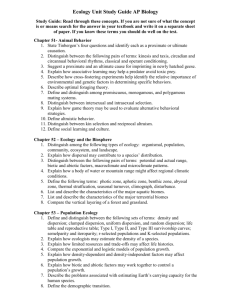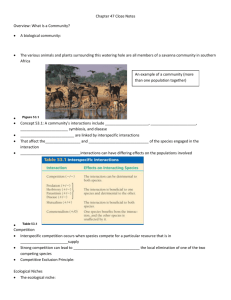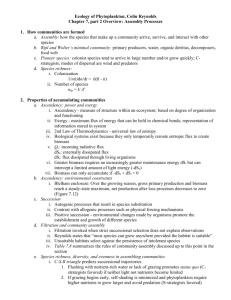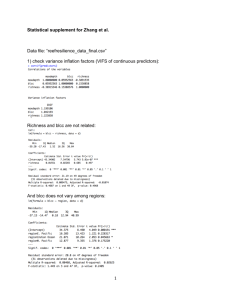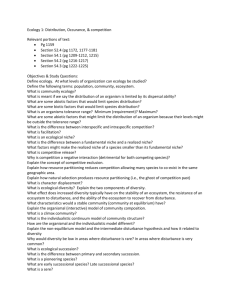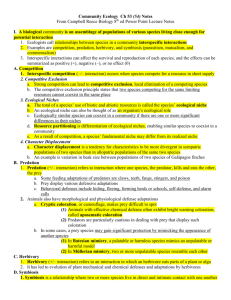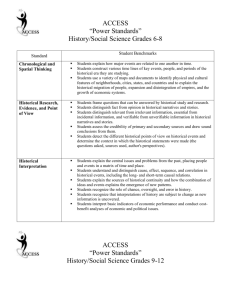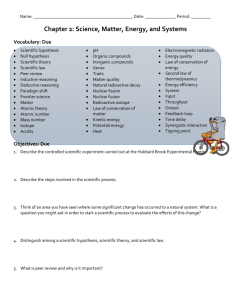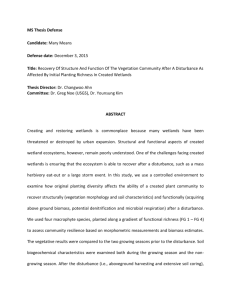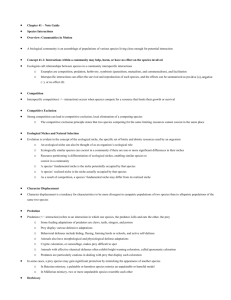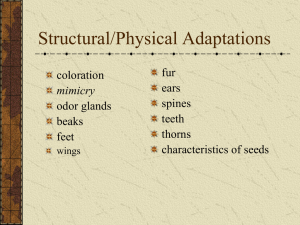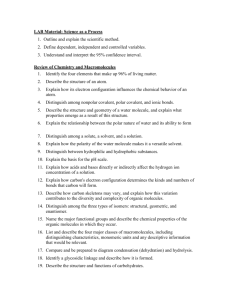Chapter 54 outline
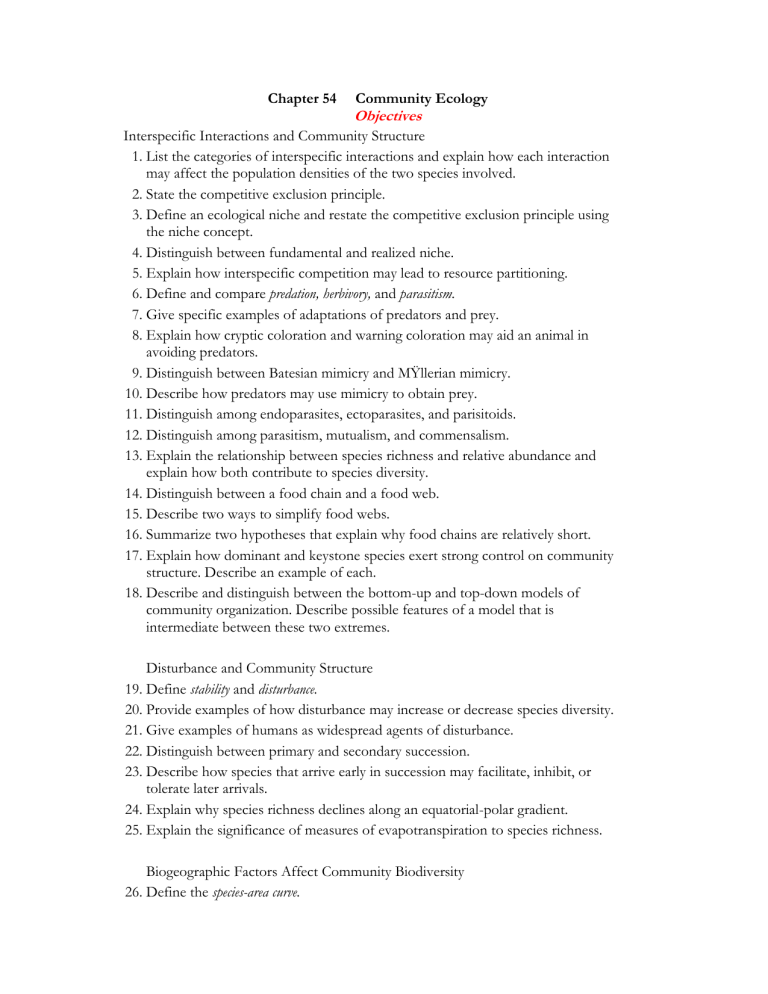
Chapter 54 Community Ecology
Objectives
Interspecific Interactions and Community Structure
1. List the categories of interspecific interactions and explain how each interaction may affect the population densities of the two species involved.
2. State the competitive exclusion principle.
3. Define an ecological niche and restate the competitive exclusion principle using the niche concept.
4. Distinguish between fundamental and realized niche.
5. Explain how interspecific competition may lead to resource partitioning.
6. Define and compare predation, herbivory, and parasitism.
7. Give specific examples of adaptations of predators and prey.
8. Explain how cryptic coloration and warning coloration may aid an animal in avoiding predators.
9. Distinguish between Batesian mimicry and MŸllerian mimicry.
10. Describe how predators may use mimicry to obtain prey.
11. Distinguish among endoparasites, ectoparasites, and parisitoids.
12. Distinguish among parasitism, mutualism, and commensalism.
13. Explain the relationship between species richness and relative abundance and explain how both contribute to species diversity.
14. Distinguish between a food chain and a food web.
15. Describe two ways to simplify food webs.
16. Summarize two hypotheses that explain why food chains are relatively short.
17. Explain how dominant and keystone species exert strong control on community structure. Describe an example of each.
18. Describe and distinguish between the bottom-up and top-down models of community organization. Describe possible features of a model that is intermediate between these two extremes.
Disturbance and Community Structure
19. Define stability and disturbance.
20. Provide examples of how disturbance may increase or decrease species diversity.
21. Give examples of humans as widespread agents of disturbance.
22. Distinguish between primary and secondary succession.
23. Describe how species that arrive early in succession may facilitate, inhibit, or tolerate later arrivals.
24. Explain why species richness declines along an equatorial-polar gradient.
25. Explain the significance of measures of evapotranspiration to species richness.
Biogeographic Factors Affect Community Biodiversity
26. Define the species-area curve.
27. Explain how species richness on islands varies according to island size and distance from the mainland.
28. Define and contrast the following pairs of hypotheses: a. interactive hypothesis versus individualistic hypothesis b. rivet model versus redundancy model
